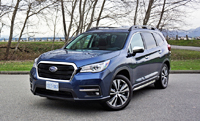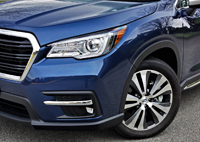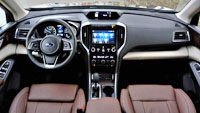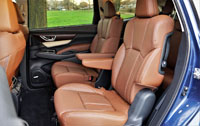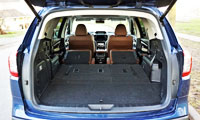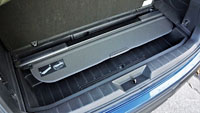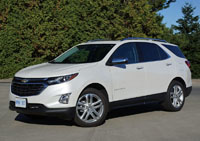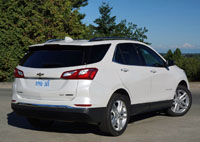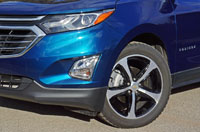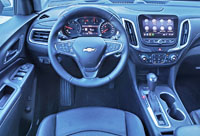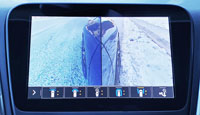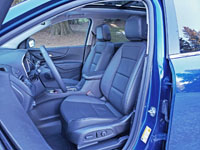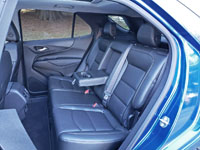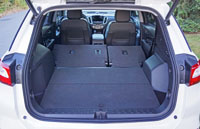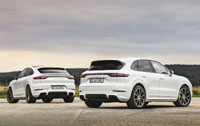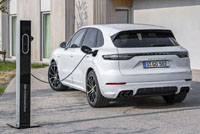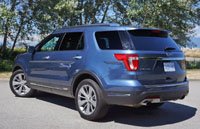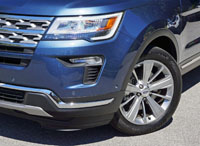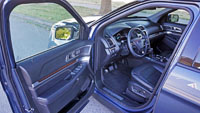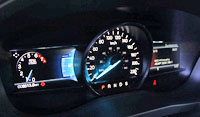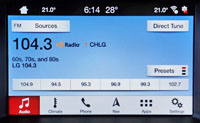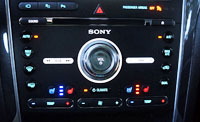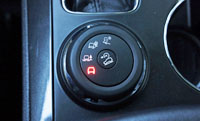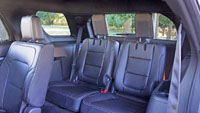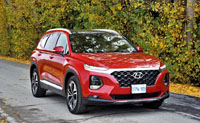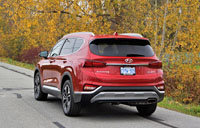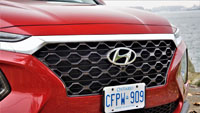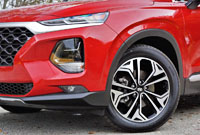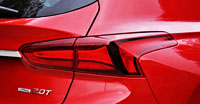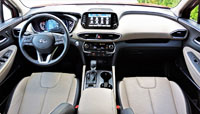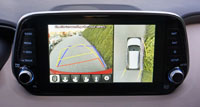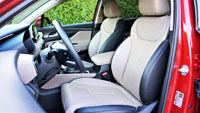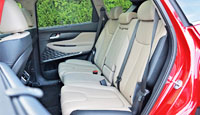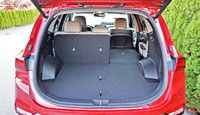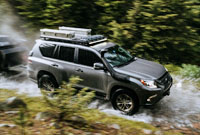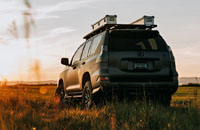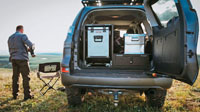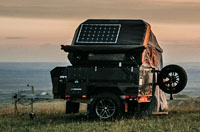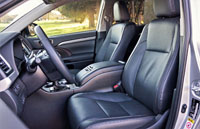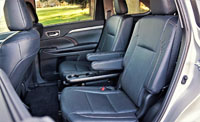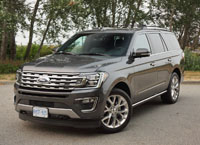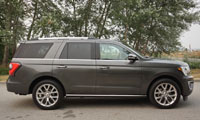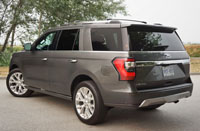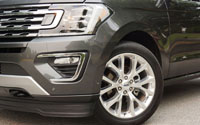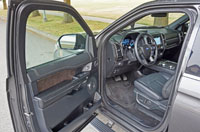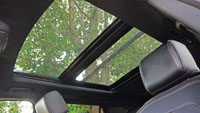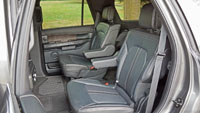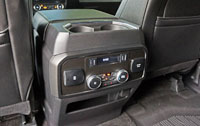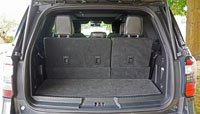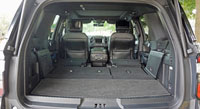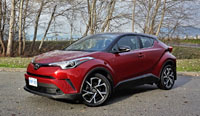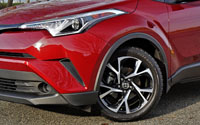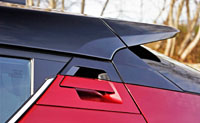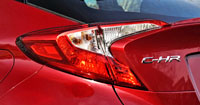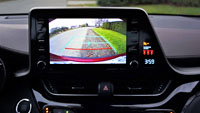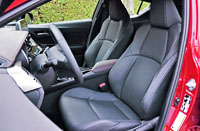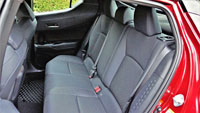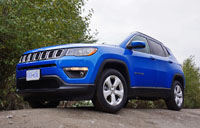
When first hearing news that Jeep would be cancelling its boxy Patriot and keeping its somewhat sleeker Compass, I wasn’t happy. It’s not that I loved the Patriot in any great way, but it was a lot more intriguing than the first-gen Compass, at least to me, plus it provided a bit of off-road capability. In spite of my silent opposition, Jeep followed through by discontinuing the Patriot in 2017, but the totally new second-generation Compass that followed that year as a 2018 model quickly made up for any concern, thanks to much more appealing lines, a wholly upgraded interior and a significant improvement in drivetrain specs.
The first-generation Compass was actually available for a full decade, from 2006 to 2016, with just one major facelift in 2011. That’s when Jeep transformed it from its Liberty/Wrangler-esque styling roots to a much classier Grand Cherokee wannabe, at least up front, but this entirely new second-gen Compass adopts even more design cues from the since-revised and very attractive Grand Cherokee, resulting in a great looking compact crossover SUV. I can’t continue one without noting how much the rear end of this SUV looks like the new Volvo XC40, but in fairness to Jeep the shapely Compass arrived a full year before the new entry-level XC40, so therefore it’s more likely that Jeep influenced Volvo instead.

Of course, Jeep has made impressions on luxury brands before. Anyone claiming Mercedes’ G-Class (Gelandewagen) paid no homage to Jeep’s iconic CJ/Wrangler (plus Land Rover’s Series 1/11/111/Defender and Toyota’s Land Cruiser J40/70) when it arrived in 1979 isn’t being fully honest, and with respect to this new Compass, it’s not only premium in styling, but does a decent job of mimicking a compact luxury utility inside as well.
You’ll want to move up from my tester’s just-above-base North trim to a Trailhawk, Limited or High Altitude model in order to get some of the more luxurious finishings, but this second-rung example has a nicely finished cabin nonetheless. Its dash top and most of the instrument panel is soft to the touch, wrapping all the way around the infotainment touchscreen before spanning the front door uppers. The door inserts get a nice supple padded leatherette treatment too, similar to the armrests that also boast attractive cream and copper dual-tone contrast stitching to match the same on the leather-wrapped steering wheel, shifter boot, and seat upholstery.
Those seats include stylish hexagonal-pattern black fabric inserts and leatherette bolsters, plus are quite comfortable due to a good inherent design and four-way power lumbar support. Yes, you heard me right, this hardly loaded compact Jeep gets an eight-way powered driver’s seat with four-way lumbar, this latter feature not always included with some premium brands’ offerings.
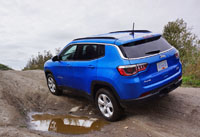
The little Jeep also gets high-quality switchgear, with the standard two-zone automatic climate control system’s main dials trimmed in chrome with rubber grips, while my Compass tester included a separate HVAC interface within its upgraded 8.4-inch touchscreen that allowed me to swipe up and down for temperature settings, not to mention adjust the two-way front seat heaters and super-hot heated steering wheel rim.
The centre touchscreen provides many more functions, including plenty of entertainment choices from the usual AM/FM radio bands to HD as well as satellite radio, not to mention Bluetooth streaming audio, while the optional navigation system provided accurate route guidance and nicely detailed mapping, the standard Android Auto smartphone integration hooked up to my Samsung S9 easily (Apple CarPlay is standard too), a nice big reverse camera with active guidelines made parking a breeze, etcetera.
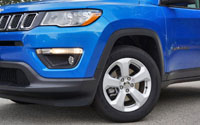
Yet more $29,645 Compass North trim features include 17-inch aluminum wheels wrapped in 225/60 all-season tires, automatic headlamps, fog lamps with cornering capability, body-coloured side mirrors and door handles, bright daylight opening mouldings, black roof rails, deep-tint sunscreen glass, proximity keyless entry, LED ambient interior lighting, and illuminated vanity mirrors, while features pulled up from the $26,150 base Sport model just below include an electric parking brake, pushbutton start/stop, heated and powered side mirrors, powered windows, tilt and telescopic steering, cruise control, a six-speaker audio system, an aux input and USB connectivity/charging port, a second-row USB charger, a 115-volt household-style power outlet, two 12-volt chargers, a forward folding front passenger seat, a capless fuel filler, hill start assist, tire pressure monitoring, a block heater, and the list goes on.
The previously noted eight-way powered driver’s seat is optional, as are the heated front seats and steering wheel rim, and the 1.4-inch larger 8.4-inch infotainment touchscreen with navigation, while my test model also boasted a really impressive, fully featured, high-resolution 7.0-inch digital gauge cluster between the otherwise analogue dials, a windshield wiper de-icer, rain-sensing wipers, an auto-dimming centre mirror, rear parking sonar, blindspot monitoring with rear cross-traffic warning, remote start, heavy-duty all-weather floor mats, a full-size spare tire, a Class III tow package, and more.
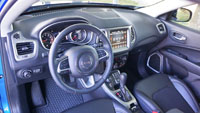
The standard quad-halogen headlamps can be upgraded to bi-xenon HIDs with LED signatures, while LED taillights can also be added, as can a set of 18-inch alloys on 225/55 all-season tires, an upgraded audio system with Alpine speakers, a two-pane panoramic sunroof, plus a powered liftgate, while the Compass’ convenience and safety can be enhanced by opting for adaptive cruise control with stop and go, automatic high-beam headlamp control, forward collision warning with active braking, advanced brake assist, and lane departure warning with lane keeping assist, and this is merely North trim.
You can also get the Compass in $30,940 Altitude trim, which ups the ante with glossed black 18-inch alloy wheels, yet more glossy black exterior trim including a black-painted roof, plus auto on/off headlights, nicer upholstery, a set of dual exhaust tips, and additional changes, while the $31,640 Upland model includes the 17-inch off-road alloy wheels found on the aforementioned Trailhawk model, as well as its unique front fascia, front skid plate, tow hooks, and other styling upgrades.

The full $34,145 Trailhawk model includes an off-road package with a unique raised uprated suspension setup, plus off-road tires encircling the just-mentioned 17-inch alloys, underbody skid plates, hill descent control, the previously noted 7.0-inch digital gauge cluster display and 8.4-inch centre touchscreen as standard, rain-sensing wipers, ambient-lighted cupholders, and leather upholstery.
Limited trim, which starts at $36,145, builds on the more car-like Altitude trim, adding the aforementioned remote start system, the windshield wiper de-icer, heated front seats, and heated steering wheel as standard equipment, plus it includes a 12-way power driver’s seat, whereas the top-line $38,340 High Altitude model features the HID headlights, LED taillights and navigation system as standard equipment, while also adding 19-inch wheels and tires, plus perforated leather upholstery (learn more about 2020 Jeep Compass pricing, including trims, packages and options, plus make sure to research available rebates and dealer invoice pricing that could save you thousands, right here on CarCostCanada).

No matter which trim line you choose, the 2020 Compass is quite spacious for its subcompact crossover SUV designation. It provides lots of room in the front, plus plenty of driver’s seat adjustability, with good reach from the telescopic steering column, providing me with an ideal driving position, while there’s more headroom than most anyone should ever require.
Once I’d set my driver’s seat up for my long-legged, short-torso body type, a process that forced me to slide it further back than most people measuring my five-foot-eight height would normally need to, I nevertheless had approximately six inches in front of my knees when seated directly behind in the second row. I also had about four inches above my head, plus another four next to my hips and shoulders, while the Compass includes a comfortably wide folding armrest in the middle. The window seats are comfortable with decent lower back support, and the aforementioned rear seat amenities, which also included good air circulation through vents on the backside of the front console, aided rear seat relaxation.
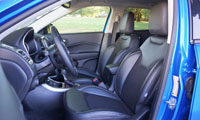
The luggage compartment features the usual carpeting on the floor and seatbacks, plus four chrome tie-down rings, and the usual 60/40 split-folding rear seats that grow cargo capacity from 770 litres (27.2 cubic feet) to 1,693 litres (39.8 cu ft). This is up 127 litres (4.5 cu ft) from the old version of this SUV when the seats are left in place, yet it’s 82 litres (2.9 cu ft) less accommodating when they’re laid flat.
Repositioning myself in the driver’s seat, I saw no Eco or Sport driving modes to eke out better mileage or drive the most performance from the Compass’ standard 2.4-litre Tigershark MultiAir four-cylinder engine, or for that matter its three drivetrains. The engine makes 180 horsepower and 175 lb-ft of torque, potent for its subcompact SUV segment, while fuel consumption depends on whether it’s mated up to the base front-wheel drive, six-speed manual combination (10.4 L/100km city, 7.3 highway and 9.0 combined), front-wheel drive with the six-speed auto (10.6 city, 7.6 highway and 9.3 combined), which also features auto stop/start that automatically shuts the engine off when it would otherwise be idling, or four-wheel drive with its nine-speed auto (10.8 city, 7.8 highway and 9.5 combined) that also boasts idle stop/start. Only Sport trim offers the manual, with the Sport, North and Altitude models allowing for the option of front-wheel drive with the six-speed automatic, while all trims can be had with the 4WD, nine-speed configuration, which is standard on Upland models and above.

The Compass is wonderfully fun to drive, especially when equipped with my tester’s steering wheel paddle-actuated nine-speed automatic. It’s plenty quick off the line, the little turbocharged four providing loads of torque for a good kick in the pants at launch and no slowing as speed ramps up. Fast-paced cornering is good too, while the little Compass provides a nice compliant ride even over imperfect pavement. It boasts a fully independent suspension with rear struts instead of a multi-link setup (or trailing arm), so as to allow for more travel while 4x4ing.
And it’s true, the little Compass is a reasonably good off-roader. Jeep’s Selec-Terrain drive mode system comes standard, providing Auto, Snow, Sand and Mud settings, the latter proving to be quite capable when put through its paces in a dirty, muddy, watery off-road playground near my home. I would’ve rather had a Trailhawk for such activities, its slight suspension lift and more suitable tires no doubt aiding grip while traversing more challenging obstacles, but nevertheless the Compass North crawled over some fairly difficult medium-duty trails including ankle-deep wading through a number of sizeable mud puddles, allowing me to bring it back home in one piece.

The only problem I experienced during my weeklong test had to do with its highly advanced optional nine-speed automatic gearbox, which while very smooth and quite refined in its taller ratios, plus enjoyable thanks to its sporty rev-matching capability, was sometimes far from smooth when starting out. When pressing the throttle it hesitated slightly, resulting in an uncomfortable slap in the back that was followed by a mechanical clunk when taking off.
Even worse, the Compass was my first and only test vehicle to stall when restarting from its idle stop/start mode. I was waiting at a stoplight with the engine automatically shut down, when the light turned green and, upon taking my foot off the brake nothing happened. I immediately dabbed the gas pedal to get things going, yet the engine only attempted a start before petering out while in Drive. After looking at the controls in dumbfounded dismay, I returned my foot to the brake, shifted back into Park, pushed the start button, once again shifted into Drive, and then waited too long (as if the transmission was slipping) for it to clunk into first gear before moving again. I wasn’t happy. In fact, a line of thankfully patient drivers was behind me, no doubt all wondering how this pathetic person purchased their driver’s license.

After some digging online, I learned that Jeep’s ZF-sourced nine-speed automatic has been causing myriad problems for the brand in this Compass and other models, particularly the Cherokee, going back years, and the near exact story I just told you was reiterated by a number of frustrated Compass customers on the U.S. NHTSA website, even as recently as August 2019.
The sad thing is I truly like this SUV, so therefore I don’t want to end the story with such a dire problem. After all, it’s a great looking little unit, offers up an attractive, well-made interior that’s stock full of upscale features, is priced quite well, is wonderfully practical, and thoroughly enjoyable to drive (when the transmission works properly). I can easily recommend its manual and six-speed automatic front-wheel drive trims, but until I’ve spent some time in a couple of trouble-free testers I hesitate as much as this test car’s nine-speed automatic when recommending one of its pricier models.
Story and photo credits: Trevor Hofmann

